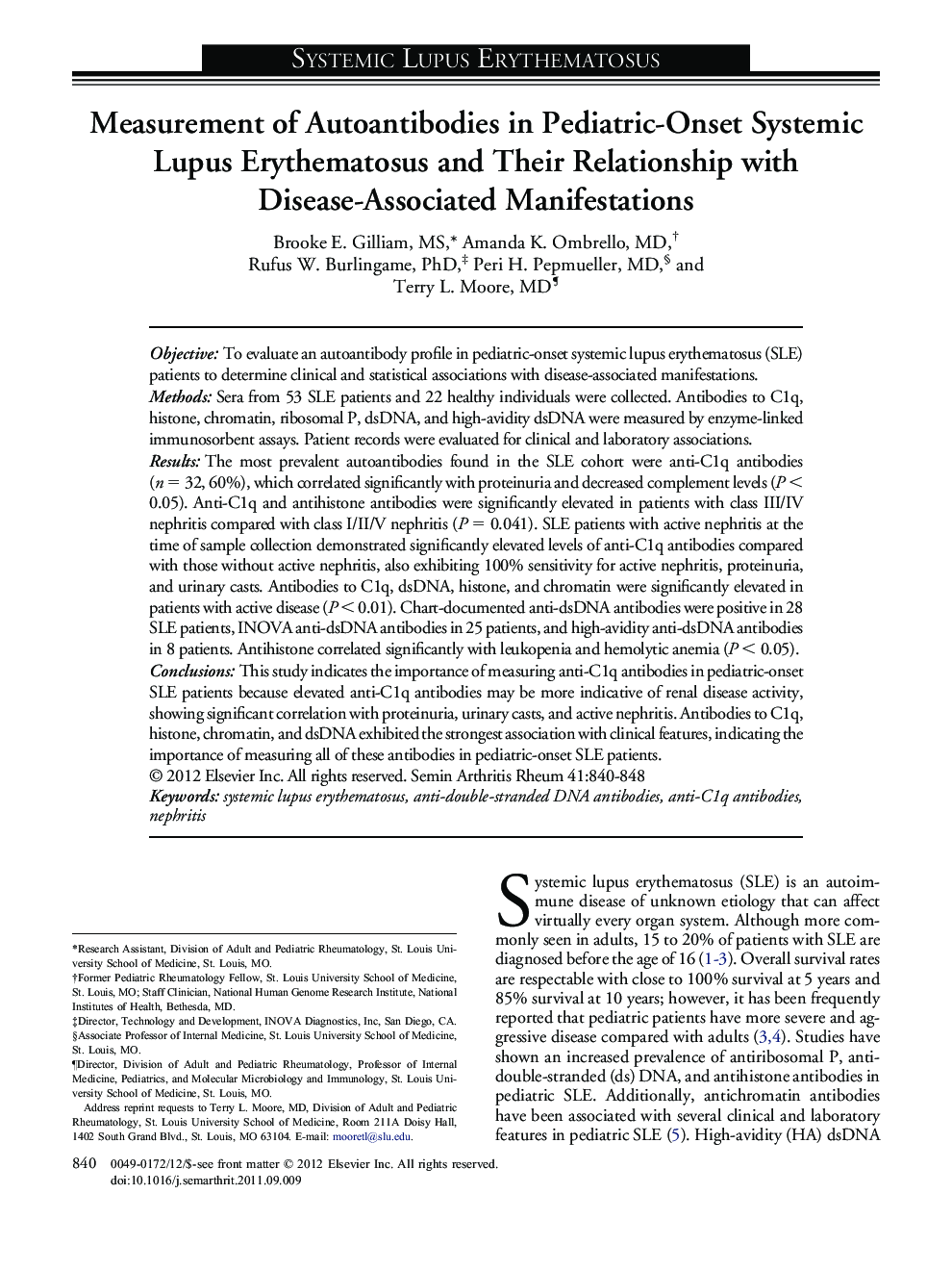| Article ID | Journal | Published Year | Pages | File Type |
|---|---|---|---|---|
| 2771460 | Seminars in Arthritis and Rheumatism | 2012 | 9 Pages |
ObjectiveTo evaluate an autoantibody profile in pediatric-onset systemic lupus erythematosus (SLE) patients to determine clinical and statistical associations with disease-associated manifestations.MethodsSera from 53 SLE patients and 22 healthy individuals were collected. Antibodies to C1q, histone, chromatin, ribosomal P, dsDNA, and high-avidity dsDNA were measured by enzyme-linked immunosorbent assays. Patient records were evaluated for clinical and laboratory associations.ResultsThe most prevalent autoantibodies found in the SLE cohort were anti-C1q antibodies (n = 32, 60%), which correlated significantly with proteinuria and decreased complement levels (P < 0.05). Anti-C1q and antihistone antibodies were significantly elevated in patients with class III/IV nephritis compared with class I/II/V nephritis (P = 0.041). SLE patients with active nephritis at the time of sample collection demonstrated significantly elevated levels of anti-C1q antibodies compared with those without active nephritis, also exhibiting 100% sensitivity for active nephritis, proteinuria, and urinary casts. Antibodies to C1q, dsDNA, histone, and chromatin were significantly elevated in patients with active disease (P < 0.01). Chart-documented anti-dsDNA antibodies were positive in 28 SLE patients, INOVA anti-dsDNA antibodies in 25 patients, and high-avidity anti-dsDNA antibodies in 8 patients. Antihistone correlated significantly with leukopenia and hemolytic anemia (P < 0.05).ConclusionsThis study indicates the importance of measuring anti-C1q antibodies in pediatric-onset SLE patients because elevated anti-C1q antibodies may be more indicative of renal disease activity, showing significant correlation with proteinuria, urinary casts, and active nephritis. Antibodies to C1q, histone, chromatin, and dsDNA exhibited the strongest association with clinical features, indicating the importance of measuring all of these antibodies in pediatric-onset SLE patients.
